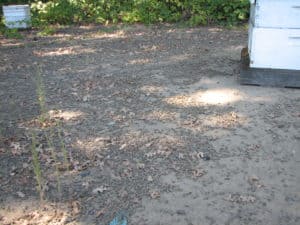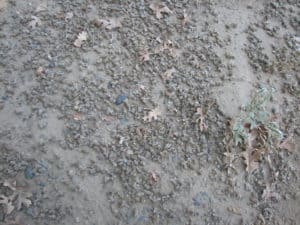Northern California is a beautiful place. I am located in the Sacramento Valley between the Sierra Nevada and Northern Coastal mountain ranges. The good soils partnered with a Mediterranean climate makes the Central Valley (the northern Sacramento Valley and the southern San Joaquin Valley) one of the most agriculturally productive regions in the world.

The intense food production means it is a breeding ground for insect pests that feed on the crops. Growers need to control these pests in order to produce a viable crop. One repercussion of this is sometimes beneficial insects take a hit. This is what I saw on a visit to a beekeepers at a walnut orchard. It had been a few weeks since the bees were affected by the spray, but it was still quite noticeable. The ground was covered with dead, dusty bees.
It is a bit of a conundrum. The growers allow the beekeepers to use their land and most will give warning before spraying chemicals toxic to beekeepers. Many beekeepers are a part of a spray warning list that alerts them if crops near an apiary is going to be sprayed. However, sometimes things go wrong and the beekeeper can lose quite a few bees. It’s sad and it is frustrating. They put in all the time and effort to keep the bees healthy, just to lose so many in less than a day.

It is fairly easy to tell when pesticides are highly toxic to bees. It is very characteristic for large numbers to die just outside of the colony and you are left with piles of dead bees. Other chemicals, like neonicotinoids, have sub-lethal effects, so it is much more difficult to tell if your bees are affected by those pesticides. Dan Rather had a report about neonicotinoids that you can find here: http://vimeo.com/29419200.